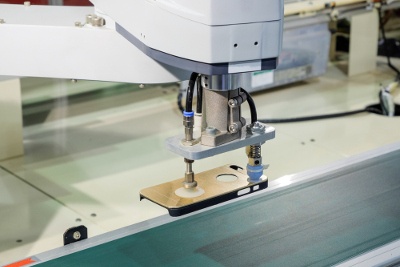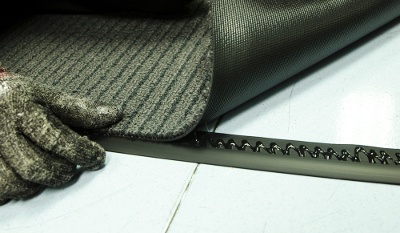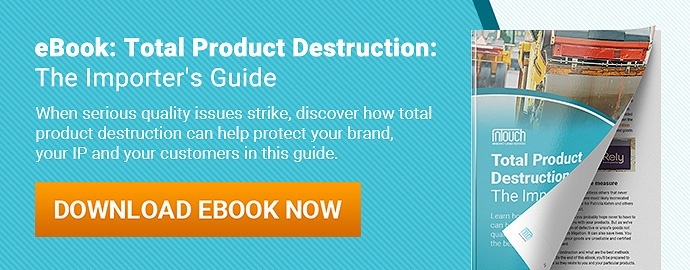Best in Manufacturing – January 21, 2018
Each Sunday, we publish a list of top articles and other content related to manufacturing in areas like quality control, product development, supply chain management, sourcing, auditing and law.
1. Are you underestimating modern Chinese manufacturing?
One of the biggest China quality control misconceptions is that Chinese companies only make shoddy goods. To some, all the Chinese produce are low value items. Maybe this was true a decade ago, depending on whom you ask. But in 2018, it’s clear times have changed.
Recently, at the world renowned Consumer Electronics Show in Las Vegas, USA, the Chinese company Future Mobility Corp unveiled the Byton. This sophisticated vehicle is an electric car equipped with artificial intelligence and is 40 percent cheaper than a Tesla Model X.
As the featured article mentions, the Byton is a byproduct of Made in China 2025, which seeks to refine Chinese manufacturing to compete with the likes of Germany, the United States, Japan and other industrialized economies.
And so far, it seems like no one is taking notice of this initiative, its grand aims and success-to-date (one example: the acquisition of Kuka):
This stated ambition to transform China into a leading manufacturing power has been greeted thus far by an astounding lack of concern, or even curiosity, among European and US industrial incumbents.
While China is gobbling up companies that further its aims in the aerospace, robotics and automotive industries (among others), global competitors are underestimating the potential of Chinese manufacturing
A powerful lesson, as referenced by this featured article, is the solar panel industry. The Chinese government in 2007 provided roughly $18 billion to the solar industry. By 2015, seven out of ten leading solar panel manufacturers were Chinese. Talk about having a hold on a market.
Like with the solar industry, will global manufacturers make the mistake of underestimating China again? Only time will tell. What are your thoughts on the rise of Chinese innovation, manufacturing and foreign company acquisitions? Let us know in the comments section at the bottom of this article.
To read the full article that covers this topic, check out the full article in the link below:
Western Automakers Can't Afford to Ignore the Threat of the New 'Made in China' – Jerome Bouchard and Matthieu Barbiery, Forbes
2. The major danger of changing suppliers in China
When it comes to working with factories in China, playing dumb can have its advantages.
If you suspect your factory is copying and selling your product (and is now your biggest competitor as a result), then you need to carefully execute your plan to change to a new supplier. Alerting your factory too soon that you know of their duplicity could result in any of the following outcomes:
- Losing your product molds
- Not being able to manufacture a product with your brand in China
- Having your goods seized at the Chinese border
- Getting reported to Sinosure, which will affect your credit terms with other Chinese manufacturers
- Getting held hostage!
The featured article mentions that these outcomes are avoidable. But you need to think ahead. You also need to resist the urge to scream at your supplier that you’re changing to a more trustworthy business partner. Your patience will pay off.
If you’d like to read more about avoiding the complications of switching to a new Chinese supplier, check out the full, informative article in the link below:
Why Changing China Suppliers Can Be So Risky – Dan Harris, China Law Blog
3. How much would a “Made in America” iPhone cost?
If you had to wager a guess at the price tag of an iPhone manufactured solely in the United States, what number would you imagine? $5,000? $10,000?
 You wouldn’t be even remotely close. This featured article estimates an iPhone made in America would cost customers anywhere from $30,000 to $100,000.
You wouldn’t be even remotely close. This featured article estimates an iPhone made in America would cost customers anywhere from $30,000 to $100,000.
It’s tempting to think the iPhone’s price tag is influenced most by high U.S. labor costs compared to China. But as Apple’s CEO, Tim Cook, said in a recent interview:
China stopped being the low labor cost country many years ago and that is not the reason to come to China from a supply point of view… …the reason is because of the skill… and the quantity of skill in one location… and the type of skill it is.
This article points out a number of factors, including this skill gap, that would make it difficult for Apple to manufacture iPhones in the U.S. at the same price as in China, namely:
- Procurement of components: The consumer electronics component supply chain is heavily concentrated in Asia
- Qualified precision tooling engineers: Engineers require years of on-the-job experience to acquire the precision tooling skills necessary for manufacturing iPhones
- Logistics and infrastructure: Apple’s customers are based all over the world, not just in the U.S. China has 7 of the 10 largest ports in the world, while the port in Los Angeles, the largest in the U.S., ranks at number 19 among the top 50.
All of these factors mean Apply probably wouldn’t be able to produce hundreds of millions of iPhones a year, which would drive the supply of iPhones down and raise their price to that of a luxury item.
Apple isn’t really considering moving their manufacturing to the U.S. But this example demonstrates some of the important considerations for importers thinking about whether to reshore manufacturing.
Check out the link below to learn more about how China’s competitive advantages can lead to lower prices for your customers:
How Much Would It Cost to Manufacture the iPhone in the U.S.? - Glenn Luk, Quora Contributor via The Huffington Post
4. Chinese counterfeiting in the Instagram era
There are now over 2 million advertisers on Instagram. Is your brand one of them? In the digital era, social media platforms have offered small brands and startups unprecedented opportunities for increased brand exposure.
But increased brand exposure can be a double-edged sword. As this featured article points out, your ads might be attracting Chinese counterfeiters in addition to potential customers.
The cycling apparel company featured in this article, Team Dream, is a small brand with only 5 employees. But their Instagram account boasts over 30,000 followers – enough to catch the eye of Chinese counterfeiters who sold an almost identical product on Alibaba using the same photo from their Instagram ad.
For this brand and other small brands mentioned in the article, fighting Chinese counterfeiters seems impossible and futile. Nich Barresi, of bike apparel brand Ornot, lamented:
We only have so much time. We can’t spend it taking legal action on AliExpress.
Protecting your IP in China is difficult, but this article suggests small brands should make an effort to fight counterfeiters while they still have a chance. As a brand gets larger, the incentive to copy their product will only increase.
Aside from losing market share, counterfeiting and knockoffs can come back to hurt your brand when customers attribute quality issues in the counterfeit product to your brand. Grey markets are a concern too, where your rejected products can end up on ecommerce channels if you don’t conduct product destruction to destroy defective products or prototypes.
Follow the link below to learn about more small brands that have fallen prey to Chinese counterfeiters and find out how you can avoid joining their ranks:
Found on Instagram, Sold on Alibaba – David Pierson, Los Angeles Times
5. An innovative glue offers better component salvaging and lower manufacturing waste
Imagine the possibilities if you could use a glue in your product that held components together during the product’s lifetime and then could easily be separated after use. Salvaging components without damaging them and harvesting materials in their pure form would be a breeze. And suddenly, recycling would become a lot more economically viable.
Working in a joint venture, companies DSM and Niaga have developed such a glue for manufacturing carpets. Their glue works as well as screws or other fasteners but separates when exposed to a signal, allowing for full product recycling. And their success so far with the glue has extended beyond their original expectations, including:
- Ease of use – easier carpet installation
- Better performance – improved fire and stain resistance
- Cost savings and reduced environmental impact – strong weight reduction and 90 percent reduction in energy use in the production process
The DSM-Niaga redesign team now plans to repeat their success elsewhere by redesigning other products with the glue. They recently announced collaboration with mattresses firm Royal Auping to redesign mattresses for closed-loop recycling. If effective there, the glue may play a major role in limiting environmental waste, as carpets and mattresses make up two of the top five products dumped in landfills in many countries (also see: cradle-to-cradle design).
How might this glue affect your products?
Even if you’re not in the softlines industry, you may still one day benefit from this or a similar glue technology. Particularly where consumer electronics are concerned, the same concept could save manufacturers even more on energy and material costs. Key components in a personal computer, for example, could be separated and replaced or recycled without damaging the housings or other hardware.
Stay tuned for more developments in glue technology. Or learn more by reading the original article in the link below:
This Reversible Glue Puts a Screw in Manufacturing - Lukas Hoex, GreenBiz
We’re constantly scanning the web for top manufacturing stories and news. If you’d like to submit an article for consideration for our weekly Best in Manufacturing, send us a message and let us know.







